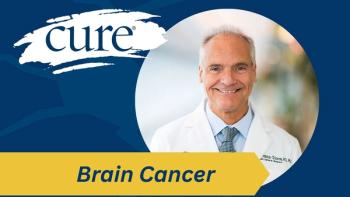
How Far We've Come Since My Diagnosis
Today women face a plethora of options. Their tumors are tested for all kinds of differences that may tell them if chemotherapy will work and which drugs would work best. There are support groups and help for families that we didn’t have.
Wow, it is 2018. Usually it’s October when I am struck by how many years it has been since my diagnosis of breast cancer and how much things have changed. 1986 seems like a decade ago instead of 32 years ago.
I was 36 and married and had four step children who I was helping raise.
I also had a 1-year-old daughter who was the love of my life. It took me two years to get pregnant, which I attributed to waiting until I was 34 to begin trying. She was born six weeks early after an emergency C-section when my blood pressure spiked, but she had a 9 on the Apgar scale, which measures the health of newborns.
She looked like a little monkey until she put on some weight, but she was perfect as far as I was concerned. Her dad had already done this four times, but he was still impressed by his fifth child. Her brothers and sisters also adored her, despite the difference in age.
When I took her in for her one-year well check-up the next October, the doctor and I both oohed and ahhed over her and how beautiful she was after her shaky start. I also asked my doc to check out the lump in my right breast, jokingly telling her I had breast cancer. It itched, I told her, so I knew it couldn’t be cancer, but I wanted to be sure.
She felt it and said it was mushy and probably fibrocystic, but since I had not yet had my first mammogram, I should go get one to be sure.
I went the next day. Despite the joking the day before, my women’s intuition told me something was wrong. I have often described women’s intuition as an angel with a two-by-four whacking me over the head.
I was standing in the kitchen the next day watching my daughter hold on to a kitchen chair and looking at me with that look that said, “Don’t look away, I might walk.”
When the phone rang I answered it and kept looking at her until I hear my doctor’s voice telling me that my mammogram had come back highly suspicious. “What does that mean?” I asked her.
“It means you probably have breast cancer,” she replied.
You all know what came next, but for me it was very different from what you go through today. There were no tests to better understand the tumor type and how to treat it. For us back then, it was black and white. It was either breast cancer or it wasn’t.
We had a few choices when it came to surgery, and even though I chose a lumpectomy, I didn’t get to do it because my tumor had “roots” — long tentacles that reached out into the tissue. And I had one large, malignant lymph node.
My choices were still simple. I had the chemotherapy that was the standard for the majority of women diagnosed. The same drugs for the same amount of time. And we all vomited because there were no antiemetics yet.
But I did take part in a clinical trial for a drug to replace the one that might damage my heart. But that was it.
Today women face a plethora of options. Their tumors are tested for all kinds of differences that may tell them if chemotherapy will work and which drugs would work best. There are support groups and help for families that we didn’t have.
Any yet, I am still here, having lived since that day with what I think is a better awareness of why I am on earth. My faith is stronger, and while I have had some of the late effects to deal with, I have been healthy for the most part.
My daughter is now 32 and wonderful. She is happily pursuing her career in New York City. My oldest stepdaughter is a costume designer for movies and she and her husband are doing a great job with their three girls. My oldest son owns a door and window company, and he has two children, the oldest of whom is now married. My second oldest stepson has two sons of his own and they all have black belts in taekwondo. And my youngest stepdaughter is married to a radiologist and raising four children.
This reminiscing is good for me because it reminds me that life goes on for those of us who have dealt with cancer. And every day that passes, the researchers learn more about how to keep us alive with a quality of life that makes it well worth living.
Too many women are still dying of breast cancer, but the advances are reducing that number. And we also need to pay more attention to those of us who lived. Survivorship is my focus to help others who go through cancer understand the challenges as life goes on.
So, I continue to work toward helping those newly diagnosed understand what is happening to them, not only medically but also emotionally and socially. It has led me to feel that while I did not die from cancer, I have given my life in another way: to help those who come after me have an easier time of it.




